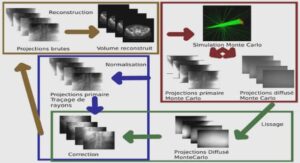The CUITent debate
To a good approximation, wc may di,’idc lhc participants in Ihc currcnl dcbatc around Spinoza’s accounl of consciousncss into two main groups. Thc firsl group daims thal Spinoza’s systcm laeks ÙIC conccptual rcsourccs ncecssary lo dclivcr a consislcnl ù1cory or consciousncss. Among ùlcm wc may eounl Margarcl Oauler Wilson, who, in a scminal arLÎcle conccrning Ùlis lopie, condudcs Ù1at « Spinoza’s syslem pro\’Ïdcs no plausible, ckar or rcasoned ,’icw on ùus fi.ll1damenlal aspcct or lhc lraditiol\al mind-body problem » (119801 1999a, 133). Along Ù1C samc lillCS, JonaÙlan Bcnnctt contcnds Ùlal Spinoza « urgenùy nccds a ùlcory or awarcncss, and unlorlunately tllc EUJJ(‘!; does nol contain onc » (198/1″ 189). Michael Della Rocca’s lirst takc on thc samc issuc was also quilc sccptical: « dcspitc ÙIC nccd l’or a cohcrcnt Ùlcory of eonsciousncss in Spinoza », he \VI-ilcs, « hc docs nol prO\’idc onc. 1 … 1 Spinoza has no principled basis on which to daim lhat not ail mcntal statcs arc SpillOU’S Theorv of ll ie H UI1Ji111 ,Ihi/d: COllse/OI/SlleSS, ,1/t’l1Ion ; i/nd /le i/SOli eonsCious OIlCS » (1996a, 9), Similarly, J on Millcr \vrilcs: « 1 rcgard thc prospccts [or a robusl and cohc rcnl Spinozistic thcory or conseiousncss as dim », cvcn lhough, hc also adds, « lhc cohcrcncy or al leasl Ù1C plausibitity or his systcm dcmandcd it » (2007, 203). vVc can includc inlo Ùùs group also Michael LcBufrc, who argucs Ù1al « Ù1C sc,’crily of Ù1C problem – logclhcr wilh o Ù ICI’ prcssing conccrns – pushcs rcadcrs lo fincl a dirccl accounl or sck ctiyc consciousncss in Spinoza’s rcmarks aboul consciousncss whcrc Ùlcrc is nonc » (20 10b, 533).
Thc Largcl of LcBufle’s polcmical rem;u’k arc scholars of thc sccond group – « sympaÙ1ctic scholars », as he also dubs thcm (201 Ob, 532) – who instcad argu c fo r Ù1C prescnce o[ al leasl Ù1C suflicicnl clemcnls, in Spinoza’s philosophy, lo account fo r Ù1C phcnomcnon of human consciousncss and lhc dilTcrcncc bclwccn conscious and unconscio us idcas. Ach’ocatcs or ùlis vicw arc many. Thcy havc nol rcachcd unilorm agrccmcnl, howc,’cr, sincc thcy cmploy distincl argumcnts ;md rcach conclusio ns Ùlal o rtcn sccm lo eonllicl with cach OÙICr. So, fo r example, carticr in his carecr, Edwin Curlcy held Lhal Spinoza’s accounl of human consciousncss was proviclcd by his ÙICOI)’ or thc « idcas of idcas »,13 conlending Ùlal « ÙIC cxislcllCC of idcas or idcas is proycn only fo r human mincis » (1 969, 126-128). Hc lalcr rclincd his position and suggcslcd Ùlal blurrcd pcrccptions of many bodily stalcs cou Id bc accountcd ror by Spinoza’s ÙICOry of confuscd knowlcdgc (Curlcy 1988, 72-7 3) . Lcc Riec (1 990) basically agrccs WiÙI Curlcy’s lalc r positio n, whcrcas Christophcr Martin (2007) proposcs to cmcnd Curley’s lirsl inlcrprctation byeonsidcring lhc complexily or Ù1C human mind and body as ÙIC ncccssal)’ condition rcquircd fo r ha\’ing ideas or ideas. tticnnc Balibar eonlcnds Ùlal « co nsciousncss » in Ùle EIJllC’S has lwo dilTcrcnl mcanings: ÙIC lirsl would belo ng lo ÙIC lirsl kind or kllowledgc « and iL is practically idcntical WiÙl mo ral conscicncc », whcrcas ÙIC sccond would conccm whal Spinoza calls lhc « ùlird kind or knowlce!gc » (119921 2013, 138).1 ~ MorcO\’Cr, and dcspilc his initial sccpticis1l1, Dclla Rocca successi\-cly argucs lor a Ùlcory or dcgrccs or consciousncss in Spinoza, which would parallcl e!cgrccs or « animation » and clcgrccs or adcquacy or idcas (2008, 115-116).
Don GéUTCll conlcnds ùlal consciousncss, 101′ Spinoza, is cqui\’a!cnl lo « dcgrccs or powcr of Ùlinking » (2008,23). Slc\’cn Nad!cr, inslcad, argucs lhal consciousncss, in Spinoza, is lo bc rcgardcd as « a runction of (bccausc idcntlcal wiùJ) a mind’s inlcrnal co1l1plcxily » (2008a, 592). For Andrca Sangiacomo (20 Il a) Ù1C conditions (or ha\’ing conscious acti\’ily, on Spinoza’s accounl, are to bc lound in bOÙI ÙIC comp!cxily or ÙIC body and ÙIC adcquacy or Ù1C iclcas. Sylianc MalinowskiCharlcs (200;(,a) and Eugcnc Marshall (201;(.) tic Spinoza’s conccption or consciousncss wilh his ùlcory of hum an allcctiYilY, arguing ùlal, lor Spinoza, ÙIC prcscncc or consciousncss dcpcnds on ÙIC cxislcncc or idcas ùlal Gm gcncralc allccls of joy and sac!ncss in ÙIC human indi\’idual. Among ùlis group or commcnlalors, a kw also suggcsl Ùlal Spinoza’s pcrspccti\’c on consciousncss can inform Ùlcorics and discussions pcculiar lo conlc1l1porary cognili\’c scicnces and philosophy of mind. Frcdcrick Mills (2001), lor cxa1l1p!c, aq,’1JCS Ùlal Spinoza’s mctaphysics, bascd on subslancc 11l0nism and Ù\Oughl-cxtcnsion parallclism, can !cac! lo a solution lo ÙIC socallcd « hard problcm » of consciousncss – conccrning Ù1C rclationship bclwccn lhc conscious cxpcricncc onc may ha\’c or oncscU’ and ÙIC world, on ÙIC onc hane!, and ÙIC physiological processcs unclcrlying such conscious c\’cnts, on ÙIC oÙlcr hand.1.3 Hcidi Ra\ycn holds Ùlal man y Spinozisl daims conccrning human psychology – including somc lhcscs aboul ÙIC scopc and nalurc or human conscious lik – « now SCCI1l lo bc supporlcd by subslantial cvidcncc l’rom Ù1C ncuroscicnccs » (2003, 259).16 SLc\’cn Nadler cn\lsagcs commo nalitics bcLwccn Spinoza’s « bcginnings o r an accounL of conscio usncss » and somc or Ihc cUlTcnl approachcs Lo mcnlal phc nomcna Lakcn by sLudics in « cmbodicd cognilio n » (2008’1,597).
The tenninological gap: conscientia as « consciousness » Many of dlC commenlators who ha\’c lookcd lor a lhcOl-y of consciousncss in Spinoza’s Ed7ics, havc aiso nolcd Ùle scarcily or passagcs whcrc ÙIC conccpt of « consciousncss » sccms lo bc broughl Up.19 Disappointingly, in nonc ofÙlesc places docs Spinoza sccm lo providc a conclusi\’c dclinilion of whal consciousncss is, or an explanation or how il originalcs in nalurc. Part of Ù1C rcasons for such a paucily or dirccl rclCrcnccs lo consciousncss can bc ascribcd to somc conceplual and lerminological conSlrainlS, which conccrn lhc Ycry objccl of our invcsLÎgaLÎo n. Fo r, whcn Spinoza wrolc Ù1C ]’.,/JJics/o lhcrc was no spccifie LaLÎn cxprcssion ayailablc lo clcarly dcnolc whal wc might nowa cl ays rc 1·c r Lo b y Ùl e Lcrm » conSCl.o usncss » .2 1 A. s MarIs la Il puls .Il , » n o o nc lcrm in Spinoza’s wriLÎngs can bc casily cquaLcd WiÙl our co nccpt o r co nccpls of co n sc i ou s n c~s » , sincc « [ … 1 Ù1C Lcrmino logy of eonscio usncss as wc know il had nol rcally so licliliecl in Ù1C philosophical disco ursc in Spinoza’s limc » (201 4, (07). In ùlis scnsc, Ù1C bcsl candidalc fo r a syslcmaLÎc cnquiry inlo Spinoza’s accounl of consciousncss is rcprcscntccl by Ù1C raÙlcr limilcd and quilC scallcrcd usc Ùlal hc makcs of somc kcy lcrms: namely, Ù1C Lalin noun consclenlù ancl ils cognalcs, such as Ù1C acljccLÎ’·c consclus and Ù1C relcyanl ycrb COllSclUS esse. Inclccd, wiÙl in a philosophical conlcxl which \Vas bcing, by lhcn, hcavily inOucncccl by Ù1C progrcssivc sprcacling and cslabli shing of CarLcsianism, Ù1CSC lcrms \Vcrc undc rgoing a scmanLÎc translo rmaLÎon which madc Ùlcm polcnlial vehiclcs lo r rclc rring lo pcrcepLÎo ns of o nc’s lho ughls or mcnlal acls of any sorl.
UnLÎI Ùlcn, Ù1C LaLÎn nOLÎon of consàcn{la had lradiLÎo nally bccn uscd to rcler Lo a hUmaIl agc nl’s capacily lo e1abo ralc sc ll~ oricnlcd normaLÎ,·c aIlc1 mo ral judgmc nls – a faculLy olk n associalcd wilh Ù1C scholasLÎc nOLÎon of synderes/s, and whosc mcaning is conycycd in English by thc wonl « conscicncc ». 22 In his LaLin wriLings, howcycr, Dcscartcs scldom – albcil stratcgically – uscs Ù1C noun cOIlsà enlla and, mo rc promincnÙY, Ù1C rC\c »ant ycrb cOIlsàus cssc lo addrcss Ù1C cogniLion Ùlal wc hayc or ail of our ÙlOughts – inc\uding « aU opcraLio ns or Ù1C will, Ù1C inlcllcct, Ù1C imaginaLion and Ù1C scnscs » (CSM II, 11 3 / AT VII , 160).23 Thcrc is lcxlual c »idcncc lo suggcsl Ùlat Spinoza was acquainlcd wiù\ both ways or using Ù1C LaLin cxprcssio ns cOllsà cIl/Ja and cOllsàus esse: on Ù1C onc hand, Ù\C lradiLio nal scholasLic usc, rclalcd lo mo ral inlrospccLio n; on lhc olhcr hand, Ù1C usc thal DcscarLcs makcs or Ùlcse lc nns Lo rcl’cr to Ù1C cognition lhal wc hayc or our ùlOughLS, i.c., our mind and its idcas. Conccrning Ù\C lattcr, in his t.rcaLisc DCS(« ‘7JtCS~5 « Pnlwiplcs or P/1JJosophy » Spinoza proyidcs an almosl ycrbaLim quo taLion or Ù\C deliniLio ns of « ÙlOughl » and « iclca », as lhcy arc origi nally found lowarcls Ù1C cnd o f Dcscarlcs’s Secolld RefJ/ics. 2 ~ Closcly fo llowing Dcscarlcs’s wo rding, Spinoza dclincs « ÙlOughl » as « cycrYÙ\ing which is in us and or which wc arc immedialcly conscious IcOllSCIÏ sumusl », and « idea » as the « lorm or each thoughL ùlrough Ùle immediaLe percepGon or which 1 am conscious 1 cOllsàus suml or Ùle ùlOughL ilsell » (pPCldl-2; C l, 238 / G l, 11.9).2.\ Ir wc lum, now, lo lhe Latin \’ersion or lhe i’-Üu’C5 (G II,43-308), wc can consider ail passages lhal in\’olve the expressions cOllsàcJlÛn and (‘onsàus essc, and scparaLe Ù1C occurrences thal seem lo display a purcly psychological use or lhcsc lerms – a use, thal is, broadly hinGng al o ne’s capabilily or perCClVll1g her mental states.
For, in some cases, Ùle word consà en/ia apparenùy relains its traditional moral and normaG »e sense, and is Ù1US correcùy translaLed inlo English as « conscience ».26 Thc rcmall1ll1g occurrences, which seem inslead lo allow l’or a broad translation in lerms or « consciousness » and « being conscious (or someÙling) », can be groupcd inlo tlu’ee sels, according lo the dilrerenl conlexls in which Ùle lcrms appear. By looking l’or a syslcmatic usc or ÙICSC nolions, wc can darily wllcÙlcr Ùlcrc is a unilicd scnsc Ùlal can bc ascribcd 10 Spinoza’s re/crcnccs lo « consciousncss » in Ù1C l-lJûcs, By Ù1C samc mcans, wc (‘;111 also , ‘cril)’ whclllcr any or Ù1C ways in which Spinoza addrcsscs « cons(‘iousncss » may relalc lo a Ù1CO[)’ accounLing for Ù1C dilrcrcncc bclwccn conscious and non-conscious mcnlal slalcs, or l’or Ù1C cxislcncc or dilTercnl dq,’TCCS or (‘ons(‘iousncss in nalurc. ln Ù1C ncxl sc clion, 1 will analysc lhc re/crcnccs lo conSCIousncss indudcd in Ù1C lirsl lwo scls: rcspcclj,’cly, Ihosc conccrning Spinoza’s argumcnl againsl rrcc will, and ÙIOSC (‘on(‘crning his cxplanation or wlly wc concciyc or our appetilcs in lcrms or , ‘olilions and dccisions or our mind. In sccLion 6, 1 will moyc Oll lo analysing ÙIC lhird scl or occurrcnccs, which deal WiÙl Spinoza’s Ù1CO[)’ or ÙIC clcrnily or Ihc mind.
Table of Abbreviations |





